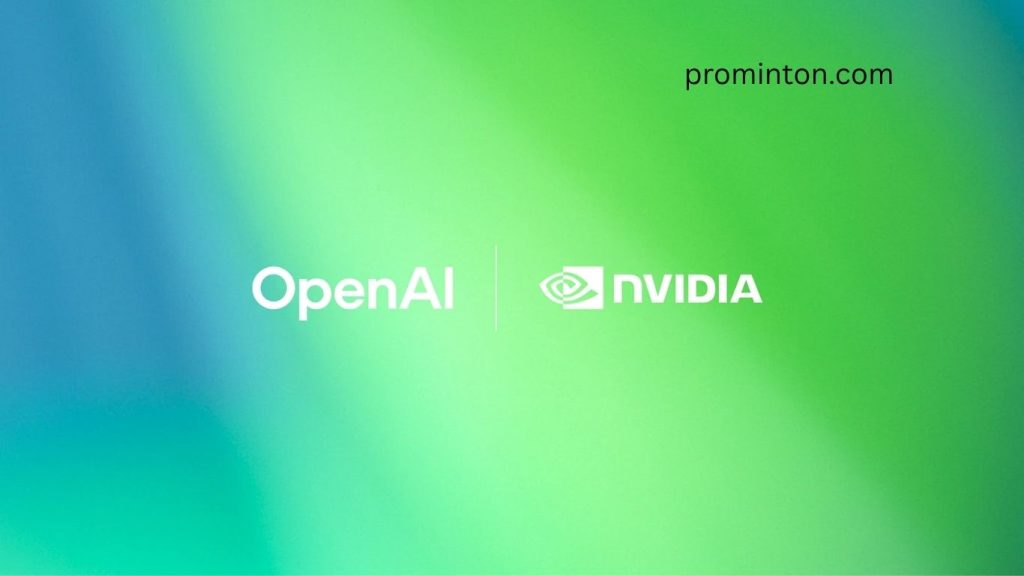Artificial intelligence is entering a new era of scale, speed, and sophistication. On September 22, 2025, OpenAI and NVIDIA announced a historic strategic partnership that will redefine the infrastructure powering the next generation of AI systems. The collaboration, outlined in a letter of intent signed in San Francisco and Santa Clara, will see OpenAI deploy at least 10 gigawatts of NVIDIA-powered AI datacenters, fueled by millions of GPUs designed to train and run increasingly advanced AI models.
To support this massive buildout, NVIDIA plans to invest up to $100 billion in OpenAI, releasing funds progressively as each gigawatt of infrastructure comes online. The first deployment phase is expected to launch in the second half of 2026, leveraging NVIDIA’s newly introduced Vera Rubin platform. This announcement represents one of the largest technology infrastructure commitments in history, underscoring the scale and urgency of AI’s rapid advancement.
Why This Partnership Matters
AI infrastructure is the backbone of progress in artificial intelligence. Training cutting-edge models requires massive compute power, advanced networking, and enormous energy capacity. This partnership ensures OpenAI has access to unprecedented resources to continue pushing the boundaries of machine learning, generative AI, and artificial general intelligence (AGI).
NVIDIA, widely regarded as the leader in AI computing, will provide the hardware and software foundation, while OpenAI brings its expertise in building large-scale models such as ChatGPT and future successors. By combining forces, the two companies aim to accelerate the development of AI systems capable of solving increasingly complex problems, benefiting businesses, developers, and society at large.
Jensen Huang, founder and CEO of NVIDIA, emphasized the historic nature of the collaboration:
“NVIDIA and OpenAI have pushed each other for a decade, from the first DGX supercomputer to the breakthrough of ChatGPT. This investment and infrastructure partnership mark the next leap forward—deploying 10 gigawatts to power the next era of intelligence.”
Sam Altman on the Future of Compute
For OpenAI, the partnership represents more than just hardware expansion—it is the foundation of a future economy driven by compute. Sam Altman, co-founder and CEO of OpenAI, described the deal as central to both innovation and accessibility:
“Everything starts with compute. Compute infrastructure will be the basis for the economy of the future, and we will utilize what we’re building with NVIDIA to both create new AI breakthroughs and empower people and businesses with them at scale.”
Altman’s words reflect a growing recognition across industries: computational power is emerging as the new currency of innovation. As models grow in size and complexity, only organizations with access to enormous compute will be able to train the next wave of transformative AI. This partnership ensures OpenAI remains at the forefront.
Building on a Decade of Collaboration
OpenAI and NVIDIA have worked together closely since the early days of modern AI research. NVIDIA’s GPUs powered many of OpenAI’s breakthroughs, from early reinforcement learning experiments to the training of large-scale language models.
Greg Brockman, co-founder and President of OpenAI, highlighted this long-standing collaboration:
“We’ve been working closely with NVIDIA since the early days of OpenAI. We’ve utilized their platform to create AI systems that hundreds of millions of people use every day. We’re excited to deploy 10 gigawatts of compute with NVIDIA to push back the frontier of intelligence and scale the benefits of this technology to everyone.”
This history of collaboration has built deep trust and technical alignment between the two organizations, laying the groundwork for today’s unprecedented investment.
What 10 Gigawatts of Compute Really Means
To put the 10-gigawatt figure into perspective: this is ten times more power capacity than many of today’s largest hyperscale datacenters. Each gigawatt represents the ability to operate millions of high-performance GPUs simultaneously, delivering compute at a scale that was once unimaginable.
This level of infrastructure enables:
- Training trillion-parameter models that extend far beyond current generative AI capabilities.
- Running real-time inference for billions of global users simultaneously.
- Supporting AI applications in industries ranging from healthcare and education to robotics and clean energy.
- Advancing the pursuit of AGI, enabling AI systems that can generalize knowledge and reasoning across domains.
With the first phase expected in 2026, the rollout will progressively transform the landscape of AI availability and performance.
NVIDIA’s Vera Rubin Platform
The deployment will leverage NVIDIA’s Vera Rubin platform, named after the pioneering astrophysicist known for her discovery of dark matter evidence. The platform is designed specifically for the massive compute, networking, and energy needs of AI supercomputing.
By integrating cutting-edge GPUs, optimized interconnects, and AI-tailored software, Vera Rubin provides the efficiency and scalability required to make a 10-gigawatt deployment feasible. The platform is also designed with sustainability in mind, helping reduce energy waste while maximizing performance per watt.
Strategic Roadmap Alignment
A critical part of the partnership involves co-optimizing roadmaps between OpenAI and NVIDIA. OpenAI will design its future models with NVIDIA’s hardware in mind, while NVIDIA will refine its chips and systems to meet the demands of OpenAI’s infrastructure software.
This alignment ensures that future generations of AI models and compute hardware evolve in tandem, reducing bottlenecks and enabling faster progress. It also strengthens NVIDIA’s position as OpenAI’s preferred compute and networking partner, further consolidating the GPU maker’s dominance in the AI sector.
Collaboration Across the Ecosystem
While NVIDIA is at the core of this deal, OpenAI continues to collaborate with a broader ecosystem of technology leaders. The partnership complements OpenAI’s work with Microsoft, Oracle, SoftBank, and Stargate partners, all of whom are investing in building advanced AI infrastructure.
This network of collaborators reflects the multi-trillion-dollar opportunity AI represents. No single company can achieve superintelligence-level compute alone, making partnerships essential to drive the next generation of breakthroughs.
OpenAI’s Expanding Reach
OpenAI has already grown into one of the most widely adopted AI providers in the world, with over 700 million weekly active users engaging with its products across consumer, enterprise, and developer ecosystems. From small businesses streamlining workflows to global corporations reimagining operations, OpenAI’s technology has become deeply embedded in the global economy.
The NVIDIA partnership ensures that OpenAI can continue scaling to meet surging demand, while also advancing its mission to develop artificial general intelligence that benefits humanity.
Frequently Asked Questions:
What is the OpenAI and NVIDIA partnership about?
The partnership focuses on deploying at least 10 gigawatts of NVIDIA-powered AI datacenters, enabling OpenAI to train and run its next-generation AI models.
How much is NVIDIA investing in OpenAI?
NVIDIA intends to invest up to $100 billion in OpenAI, progressively released as each gigawatt of AI infrastructure comes online.
When will the first phase of this project launch?
The first gigawatt of NVIDIA systems is expected to be deployed in the second half of 2026 using NVIDIA’s Vera Rubin platform.
Why is this partnership significant for AI development?
It provides the massive compute power needed to train trillion-parameter AI models, expand global AI applications, and accelerate the path toward artificial general intelligence (AGI).
What role does NVIDIA’s Vera Rubin platform play?
The Vera Rubin platform is designed to handle large-scale AI workloads with maximum efficiency, powering the deployment of millions of GPUs for OpenAI’s next-generation infrastructure.
How will this partnership benefit OpenAI users?
With greater compute capacity, OpenAI can deliver faster, more powerful AI tools to over 700 million weekly active users, businesses, and developers worldwide.
Are other companies involved in this AI infrastructure initiative?
Yes, the partnership complements OpenAI’s collaborations with Microsoft, Oracle, SoftBank, and Stargate partners, all working toward building the world’s most advanced AI ecosystem.
Conclusion
The partnership between OpenAI and NVIDIA marks a defining milestone in the evolution of artificial intelligence. By committing to deploy at least 10 gigawatts of cutting-edge AI datacenters and securing a $100 billion investment, the two companies are laying the foundation for unprecedented progress in computing, research, and global innovation. For OpenAI, this collaboration ensures the compute power needed to advance toward artificial general intelligence while scaling access to hundreds of millions of users. For NVIDIA, it cements its position as the world’s most essential AI infrastructure provider.



